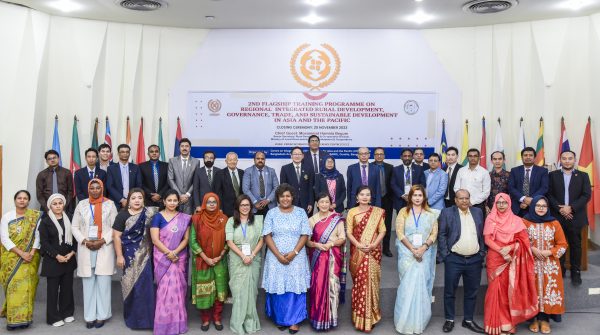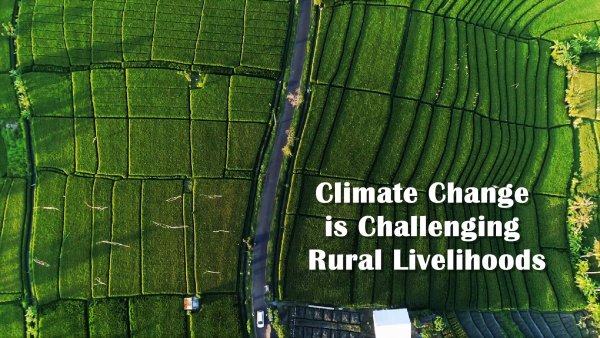Press Release 25 November, 2023 The closing ceremony of the 2nd CIRDAP-BARD Flagship Training Programme on Regional Integrated Rural Development, Governance, Trade, and Sustainable Development in Asia and the Pacific organized by the Centre on Integrated Rural Development for Asia and the Pacific (CIRDAP) in collaboration with Bangladesh Academy for Rural Development (BARD) was held on 25th of November, 2023 at CIRDAP International Conference Centre (CICC). The respected Senior Secretary of Rural Development & Cooperative division, Ministry of Local Government, Rural Development and Cooperatives, Government of the People’s Republic of Bangladesh, Ms. Mosammat Hamida Begum embraced the closing ceremony as the Chief Guest. At the ceremony, Mr. Md. Harun-or-Rashid Mollah, Director General of Bangladesh Academy for Rural Development (BARD); Dr. Cherdsak Virapat Director General, of the Centre on Integrated Rural Development for Asia and the Pacific (CIRDAP); and Dr. Somporn Hanpongpandh, former Director General of CIRDAP and course Director for this programme also graced the occasion with their presence. Dr. Cherdsak Virapat, Director General, CIRDAP and Mr. Harun-or-Rashid Mollah, Director General, BARD provided the welcome address in the ceremony where as Dr. Somporn Hanpongpandh, Course director addressed on the accomplishment of this regional course. In this three-week comprehensive training programme 24 participants from the different nation-states awarded with the certificates. Twelve countries from the Asia-Pacific regions (also CIRDAP member countries) are Bangladesh, Fiji, India, Indonesia, IR Iran, Lao PDR, Malaysia, Myanmar, Nepal, Pakistan, Sri Lanka, Thailand; and two countries from African nations are Ghana and Mauritius. On behalf of the cohort of the 2nd flagship training 2023, two representatives among the successful trainees named Md. Mazharul Anowar from Bangladesh and Ms. Anoutchka Angeera Hinchoo Virginie from Mauritius shared their experiences, appreciations and thoughts on the training programme. The five other representatives respectively from Fiji, India, Pakistan, Sri Lanka and Ghana also provided their testimonials to the audiences via video clips. The Director General of CIRDAP honored the Chief Guest along with the Director General of BARD and the course Director of the training programme with a token of appreciations. As a part of the closing ceremony, CIRDAP organized special Award Ceremony of the Aziz-Ul Haq Rural Development Medal in 2023. CIRDAP took the initiative to honor the Rural Development Academy (RDA), Bogura in recognition of its contribution in rural development through enhancing capacities, improving facilities and disseminating technologies in Bangladesh and for unwavering support to CIRDAP mission. Mr. Md. Khurshid Iqbal Rezvi, Director General of RDA (Additional Secretary) received the award from the Chief Guest of the closing ceremony. For further information please contact:Ms. Hurain JannatCommunication Officer, CIRDAPEmail: communication_officer@cirdap.org







